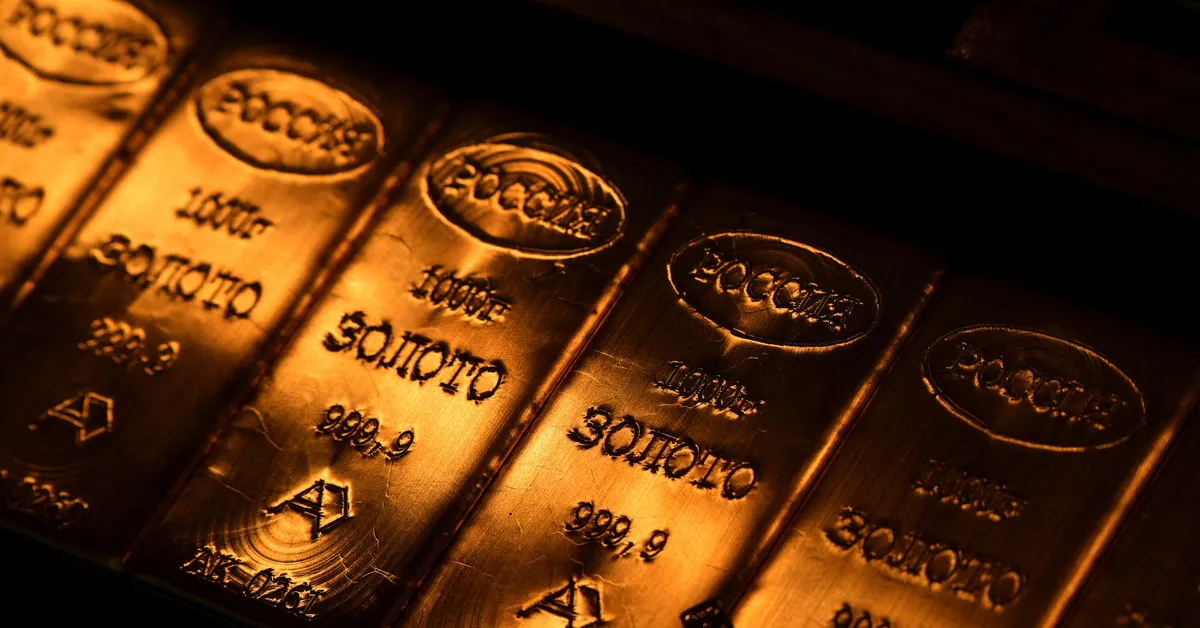
On October 17, 2023, gold prices experienced a remarkable surge, surpassing $4,300 an ounce, marking a trajectory towards its most significant weekly gain since December 2008. This surge in gold prices is primarily attributed to escalating geopolitical tensions and economic instability, coupled with increasing expectations for U.S. rate cuts, driving investors toward this traditional safe-haven metal.
As of 1102 GMT, spot gold rose by 0.2% to $4,332.17 per ounce, following a peak of $4,378.69 earlier in the day. In addition, U.S. gold futures for December delivery saw an impressive jump of 1%, reaching $4,345.90. This week alone, gold is poised for an approximately 8% increase, reflecting a significant market shift. Earlier in the session, gold had been on track for its largest gain since the financial turmoil of September 2008, triggered by the collapse of Lehman Brothers.
According to Alexander Zumpfe, a precious metals trader at Heraeus Metals Germany, the current market environment is highly conducive for gold, influenced by rate-cut expectations, geopolitical risks, and persistent concerns surrounding banking stability. Zumpfe also noted that while gold prices are soaring, a period of short-term consolidation may be imminent due to the metal being classified as overbought, with a relative strength index of 88.
In parallel, spot silver experienced a minor decline of 0.4%, settling at $54 per ounce after reaching a record high of $54.47. This fluctuation in silver prices is closely tied to the ongoing rally in gold, as well as a short squeeze within the spot market. Overall, silver is expected to show a 7.4% gain for the week.
As bank shares plummeted, global stock markets also felt the strain, primarily due to signs of credit stress emerging from U.S. regional lenders. This uncertainty has prompted investors to seek refuge in safe-haven assets like gold. U.S. Federal Reserve Governor Christopher Waller has expressed support for another rate cut, with investors anticipating a 25-basis-point reduction during the Fed's upcoming meeting on October 29-30, followed by another cut in December.
In the geopolitical arena, China has leveled new accusations against the U.S. concerning its rare earth controls, rejecting calls to reverse export restrictions. This backdrop of global tension only serves to bolster the appeal of gold as a hedge against uncertainty and inflation.
Gold has experienced a staggering increase of over 66% this year, attributed to various factors including geopolitical instability, expectations of rate cuts, central bank purchasing, de-dollarization efforts, and robust inflows into exchange-traded funds (ETFs). Michael Haigh, the global head of commodities research at Societe Generale, emphasizes that substantial ETF flows are significantly propelling prices upward.
Notably, the SPDR Gold Trust, recognized as the world's largest gold-backed ETF, reported that its holdings rose to 1,034.62 tonnes on Thursday, marking the highest level since July 2022. In a bullish outlook, HSBC has raised its average gold price forecast for 2025 by $100 to $3,455 per ounce and anticipates gold could reach $5,000 an ounce by 2026, driven by heightened risks in the market.
While gold continues to shine amidst economic turbulence, other precious metals have not shared the same fortune. Platinum has fallen by 4%, now priced at $1,644.75, and palladium has decreased by 2.2%, currently at $1,578.07.
As the market evolves, investors are keenly watching the trends in gold and other precious metals, navigating through a landscape marked by uncertainty and potential opportunities.